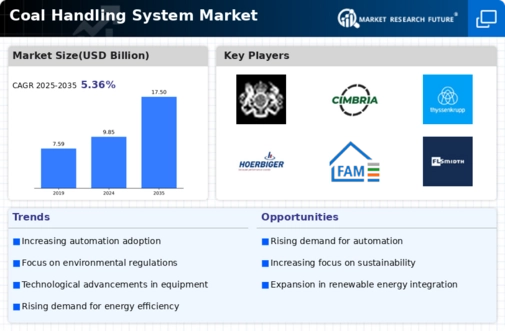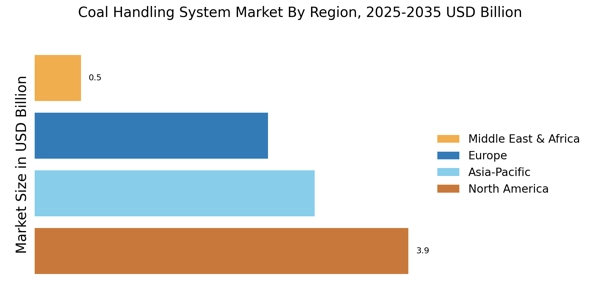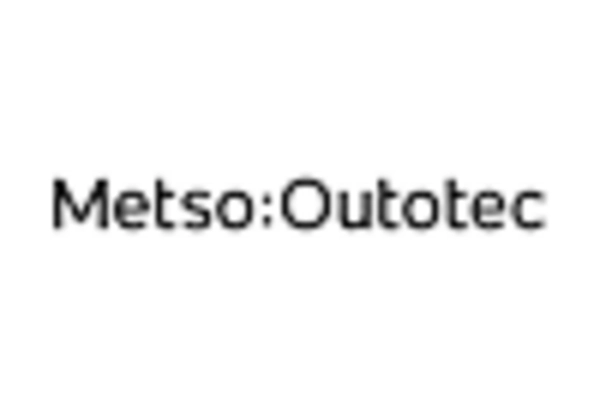Rising Energy Demand
The increasing The Coal Handling System Industry. As economies expand, the need for reliable energy sources intensifies. Coal remains a significant contributor to energy generation, particularly in developing regions. According to recent data, coal-fired power plants account for approximately 38% of the world's electricity generation. This persistent reliance on coal necessitates efficient coal handling systems to ensure smooth operations and minimize downtime. The Coal Handling System Market is thus poised for growth as utilities and industries seek to enhance their coal supply chains to meet rising energy needs.
Regulatory Compliance
Regulatory compliance is a significant driver influencing the Coal Handling System Market. Governments worldwide are implementing stringent regulations to mitigate environmental impacts associated with coal handling and transportation. Compliance with these regulations often necessitates the adoption of advanced coal handling technologies that minimize dust emissions and enhance safety. The market is witnessing a shift towards systems that not only meet regulatory standards but also promote sustainable practices. As industries strive to align with these regulations, the demand for compliant coal handling systems is likely to increase, driving market growth.
Infrastructure Development
Infrastructure development is a vital driver for the Coal Handling System Market. As countries invest in expanding their energy infrastructure, the need for efficient coal handling systems becomes paramount. New coal mines and power plants require robust coal handling solutions to facilitate the transportation and processing of coal. Recent investments in infrastructure projects, particularly in emerging economies, are expected to boost the demand for coal handling systems. This trend indicates a growing market opportunity for manufacturers and suppliers of coal handling equipment, as they cater to the evolving needs of the energy sector.
Technological Advancements
Technological advancements play a crucial role in shaping the Coal Handling System Market. Innovations such as automation, real-time monitoring, and advanced material handling equipment enhance operational efficiency and safety. The integration of smart technologies allows for predictive maintenance, reducing operational costs and increasing system reliability. For instance, automated coal handling systems can improve throughput by up to 30%, thereby optimizing resource utilization. As industries increasingly adopt these technologies, the demand for sophisticated coal handling solutions is expected to rise, further propelling the market forward.
Shift Towards Cleaner Technologies
The shift towards cleaner technologies is influencing the Coal Handling System Market. While coal remains a key energy source, there is a growing emphasis on reducing its environmental footprint. This shift is prompting industries to invest in advanced coal handling systems that incorporate cleaner technologies, such as carbon capture and storage. These innovations not only enhance operational efficiency but also align with global sustainability goals. As companies seek to balance energy needs with environmental responsibilities, the demand for cleaner coal handling solutions is likely to rise, shaping the future of the market.


















Leave a Comment